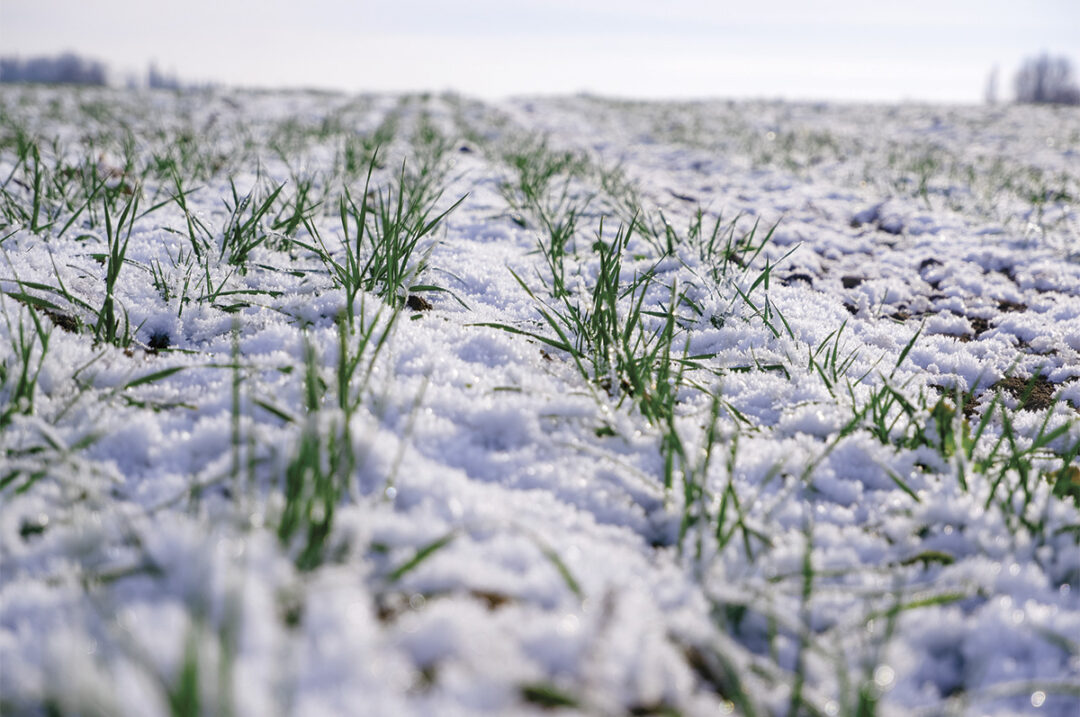Brutal droughts across the country and difficult winters have led to the widespread failure of wheat acres. Dwindling wheat and forage supplies lead to rising feed prices, posing additional challenges to the industry. In early 2023, more acres were lost than any in recent history. Fortunately, American farmers are resilient, and there are steps producers can take to prepare for the future and minimize the damage of failed wheat acres.
Green Cover Seed hosted a webinar to educate producers about their options for failed wheat acres. Keith Burns, the co-owner and co-operator of Green Cover Seed, hosted the webinar, alongside Scott Ravenkamp, contract production manager, and Jimmy Emmons, an experienced Oklahoma grower and former USDA farmer advocate.
The webinar first discussed the conditions that influence lost acreage. Emmons began by sharing the field conditions seen across the country and the state of crops in Kansas and Texas. Frequently, growers were seeing lost acres and leaning on crop insurance. In areas that had especially good cover going into the season, growers are lightly grazing the area but need to be mindful to ensure the health of the remaining cover. Rye, barley and wheat fields are seeing an increased risk of fire, exacerbated by high winds and drought.
Ravenkamp described a different situation spanning from Colorado to Nebraska. In these areas, drought isn’t the sole threat to cereal crops. Rather, “winterkill” has decimated many acres, even those that are irrigated. It is possible that planting date had a negative influence on many of those acres.
Regardless of the cause, there is no way to bring back failed wheat acres. In order to revitalize operations and prepare for future seasons, producers must consider a wide variety of factors. But Ravenkamp and Emmons agreed that cover is the keyword when preparing for future seasons.
Emmons recommended waiting for at least 2 inches of rain before planting wheat moving forward, to ensure adequate stands. Otherwise, the crop is lost to rain and heat, even with subsequent rains. Additionally, Emmons advised against spraying or tilling residue in fields to preserve as much cover as possible as conditions worsen. He was hopeful that drought conditions will eventually give way to a wetter weather pattern. Until then, preserving as much cover as possible is necessary to protect crops.
For growers in drought conditions with very little cover on fields, Emmons suggested planting millet over the summer, provided there is some moisture, in order to establish some cover in bare fields. Water use efficiency is of the utmost importance and should be considered above all other factors in cases of severe drought. Though difficult, waiting for rain is the best course of action in many cases.
For growers with more moisture to work with, considering crops that leave higher residue will benefit future plantings. Ravenkamp discussed the many forage options, noting that growers should wait to terminate these crops and other crops until they’ve lignified, in order to provide lasting cover. Ravenkamp discussed the ramifications of these choices on no-till and regenerative agriculture operations, as healthier soil may be more prone to erosion and, therefore, further benefits from ground cover.
The speakers discussed emerging opportunities for growers to switch some of their acres to forage crops despite these challenges. Many forage crops are more water-efficient for growers than corn and may help to address the forage supply issue. There are additional benefits to growers who can turn over crops, such as millet, more quickly and make better use of marginal land. Ultimately, these options protect the soil and prepare growers for a more successful crop in subsequent growing seasons.
From there, Emmons issued a warning to growers considering haying and grazing their fields. It is of the utmost importance that growers who choose to do so cut high enough to leave residue behind, especially in those regions that experience high winds.
The speakers agreed that waiting to purchase seed can add to the risk associated with these conditions. For growers in these situations, waiting to receive seed after receiving rain can result in delays that lead to repeated failures. Growers must be ready to move quickly by purchasing seed ahead of time or preparing to pick up seed to avoid shipping delays. Otherwise, growers can easily miss their window for planting.
The most important lesson to remember is that every failed acre is a valuable source of information moving forward. Even seasoned growers can learn something from new hybrids and changing weather conditions. Ravenkamp used the example of extended growing seasons made possible by modern corn genetics. As corn growing seasons lengthen, planting windows for cereal crops are pushed back or shortened. Growers should keep detailed records to help them adapt to new and ongoing challenges.
The webinar concluded with a Q&A responding to growers’ questions across the country. The questions and responses prove that there is no clear-cut answer to failed wheat acres. Instead, growers should continue to educate themselves and protect their land with proper ground cover. From there, growers need to be flexible and prepare to respond quickly to changes in weather.











